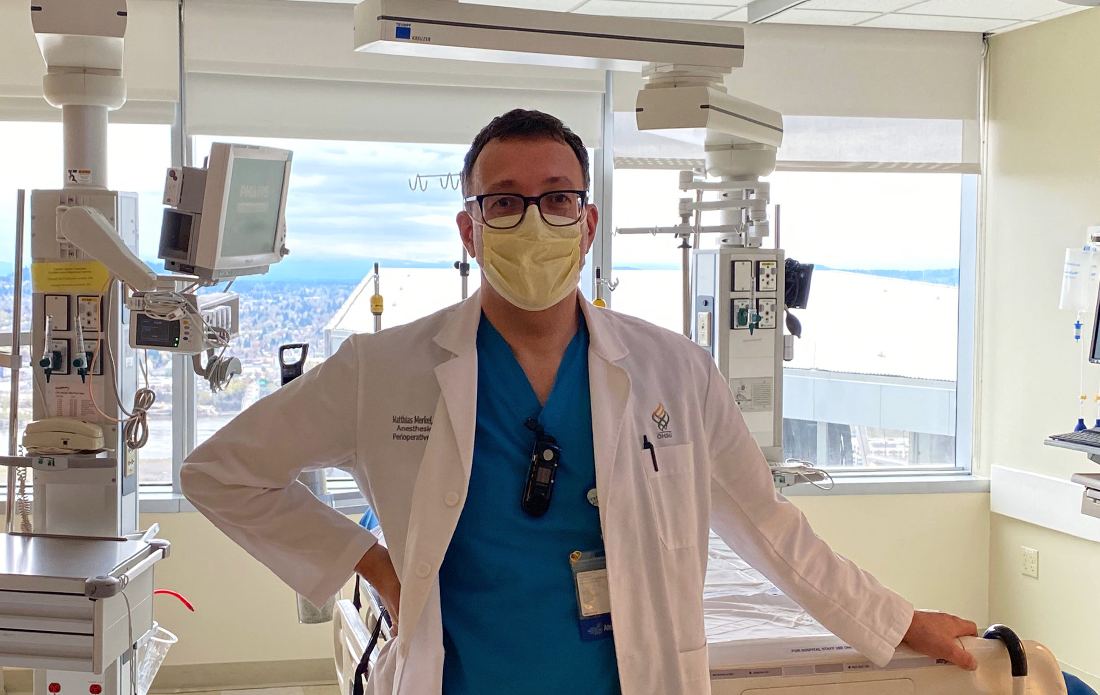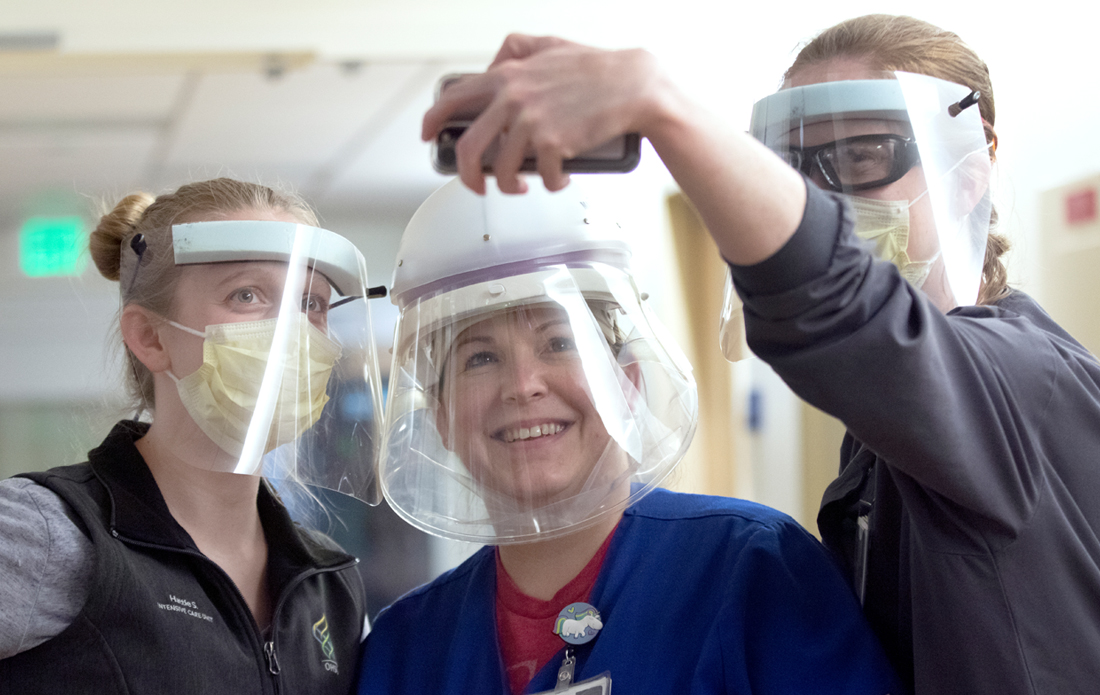Matthias Merkel, MD, PhD, has always had a tendency to run toward difficult situations. This instinct kicked in at the age of 16, when he became a Red Cross volunteer in his home country of Germany and continued as a paramedic in the German emergency medical services system. That experience, coupled with his passion for helping others, drove him to medicine.
After medical school, Merkel completed training in anesthesiology and critical care, and, in addition to working at Ludwig Maximilian University hospital in Munich, Germany, he was active in Munich’s air and ground-based emergency system as a physician.
Today, as the chief medical capacity officer for OHSU’s Mission Control and professor and vice chair of critical care, Merkel is using his more than 20 years of expertise in anesthesia and critical care to aid patients during the unprecedented COVID-19 pandemic.
Receiving the right level of care
In 2017, OHSU opened its Mission Control, a modern command center that uses predictive analytics and a real-time data display to coordinate patient care from the time the patient enters the hospital until they are discharged.
Merkel was part of the team who helped bring the program online. He likens the patient care operations at a hospital to that of an air traffic control tower.
Patients arrive at OHSU in various ways from different locations — via ambulance, helicopter, car, taxi or bus; from community hospitals around the state or between OHSU clinics and units.
Prior to implementing Mission Control, nurse leaders would meet every six hours or so to compare bed counts and anticipated patient discharges. Between meet-ups, bed flow managers had to rely on a combination of in-person rounds, phone calls, pages and text messages to determine how many patients could be admitted without the support of real-time data technology.
Today, the command center is staffed 24/7 by a team of nurses, physicians, emergency transport coordinators and patient placement officers. When a patient needs care, the team references current data to find the best location — at OHSU or a partner hospital — to match the patient’s needs with resources across the OHSU Health system.
“I feel I’m well prepared to lead and influence what we are doing, and am humbled by the number of people in all areas coming together that normally — outside of a pandemic — would never interact with each other, with a common goal of keeping us safe.”
In light of the COVID-19 pandemic, OHSU accelerated its ability to respond to the virus and coordinate statewide efforts to address this situation, thanks, in large part, to a $7 million donation from Phil and Penny Knight and Nike leaders.
Within the last few weeks, OHSU Mission Control deployed a COVID-19 specific tracking module, called a “tile,” which provides OHSU with a real-time unit-by-unit view of COVID-19 test results, availability of critical care and negative pressure rooms to care for patients who test positive, and other data that helps the health system to manage COVID-19.
OHSU Mission Control are leading the effort for real-time tracking of 90 percent of hospital beds across the state in collaboration with state and health care partners. This overview can be used should the state experience a surge in patients due to COVID-19, and also for high hospital-bed demands in the future across the state, to optimize patient flow and reduce delays in appropriate patient care.
Because of this expansion across the state, OHSU and all participating hospitals and health systems will be able to coordinate care for people diagnosed with COVID-19 — ensuring that patients are receiving the right level of care at the closest facility best able to serve their needs.
“Things are moving forward that, outside of a pandemic, would have never been possible,” Merkel said. “This will do us good in any crisis in the future. Having this capability allows us to act more as one big health system. This gives me a lot of hope during this challenging time.”
Finding hope
OHSU physicians, nurses, researchers, faculty, students and staff are working tirelessly to respond to the pandemic. People across states, health systems and specialties are coming together to brainstorm how to better prepare their response. For Merkel, it’s inspiring.
“I like being part of a team who brainstorms how we can better prepare,” he said. “This situation shows that if we have to, we can do a lot of things together, and each of us contributes to the success of that.”
“I feel I’m well prepared to lead and influence what we are doing, and am humbled by the number of people in all areas coming together that normally — outside of a pandemic — would never interact with each other, with a common goal of keeping us safe,” he said. “This is true within OHSU, but even way beyond our hospital boundaries.”


